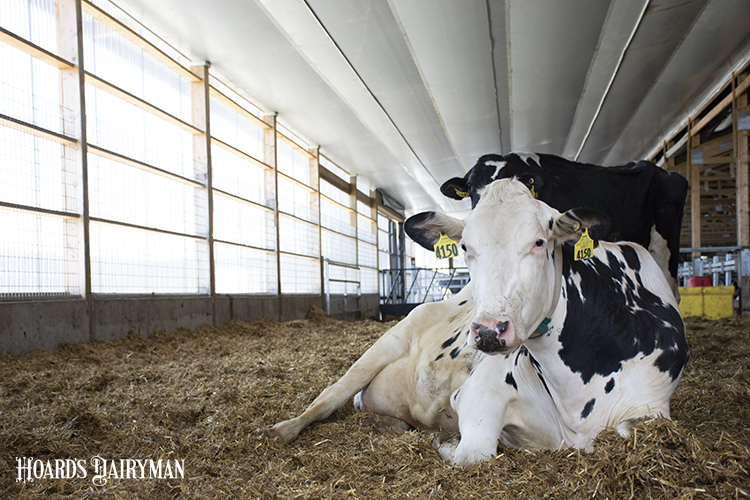
Pregnancy rate might be the best key performance indicator to evaluate the reproductive performance of the herd. It is a function of heat detection rate and conception rate, two activities related to breeding. In general terms, a high pregnancy rate indicates that cows are becoming pregnant and that replacements for the herd are (supposedly) secured.
I want to stress, however, the inclusion of the word “supposedly” in my previous sentence. The reason for its inclusion is that, although pregnancies are secured, a high pregnancy rate might not ensure replacements if a high pregnancy loss or abortion rate exists in the herd.
As an example, a herd with a 28% pregnancy rate and a 22% abortion rate will result in an adjusted pregnancy rate equal to 22% (28% × [100 – 22] % = 22%). Likewise, a herd with a 24% pregnancy rate and a 9% abortion rate will also result in an adjusted pregnancy rate equal to 22% (24% × [100 – 9] % = 22%). Even though it has a less effective breeding program, the latter herd has a similar reproductive outcome compared to the former herd.
Know the numbers
An abortion cannot be diagnosed at a pregnancy check if a previous pregnancy diagnosis did not occur. Therefore, the first step in determining the abortion rate is to perform a pregnancy diagnosis 26 to 33 days after breeding. Then, a second pregnancy diagnosis can be performed 14 to 39 days after the first pregnancy diagnosis.
In general terms, dairy managers and dairy professionals are quite familiar with the benchmarks for heat detection rate, conception rate, and pregnancy rate. However, finding benchmarks for abortion rate can be more challenging. In this regard, researchers from the University of Wisconsin reported that the abortion rate of nine dairy herds ranged from 7.6% to 21.6% with a median of 15.2%. Although they do not represent a great population of herds and cows, these values should provide some benchmark values to holistically evaluate the reproductive performance of your herd.








